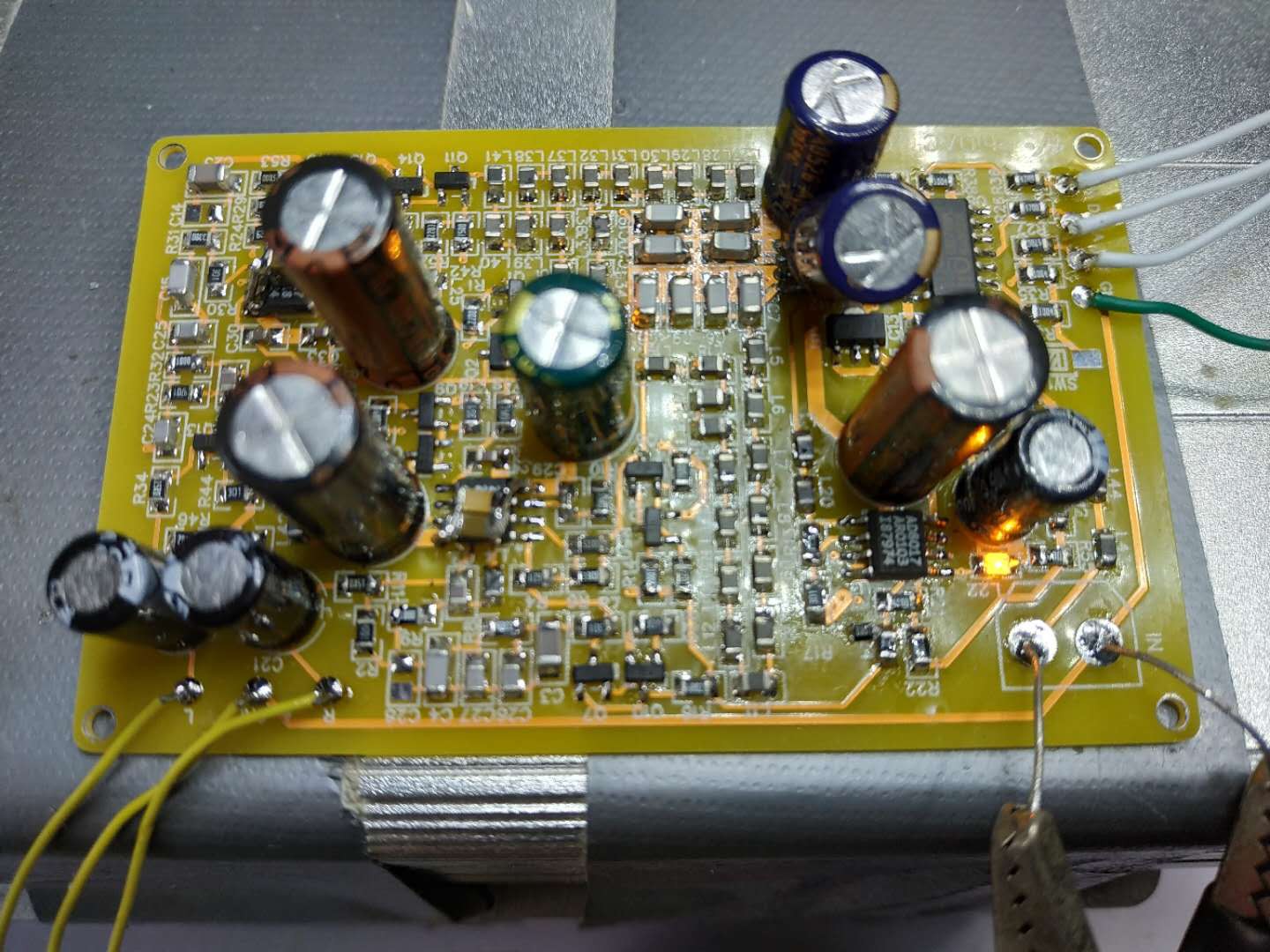I built up a few of the 4 board v2 lingDACs and to date one has been sent out to a friend, another is waiting to go. Each took a few hours (in the region of 5-6) of labour - not just in assembling the parts on the PCBs but also in pre-selecting the inductor and capacitor values to get the predicted frequency response out of the filter. Then there's a couple of select-on-test resistors to set the DC offset to mid-span. When I received messages from interested customers many (not all) seemed rather put off by the asking price. So I began to wonder if it might be possible to simplify the design to make it more mass reproducible.
The filter is the foundation of the sound of this DAC - bypass it and you lose much of the 3D effect. But how good does it need to be really to keep the subjective benefits? I played around with reducing the order and found that while the measurements suffer quite badly (the waveform above 5k as shown on a 'scope starts to look decidedly weird) with a 3rd order (single L, 2 Cs) the sound didn't suffer much if at all. So a 3rd order filter would definitely be viable, if only I could find an inductor with close enough tolerance (20% really isn't good enough). Another set of experiments I did using ICs instead of discrete transistors to see if the circuitry could be simplified. As usual with opamps substituted for discrete transistors the power supplies become very critical to the subjective effect, which then means more complexity in regulators. I decided to press on regardless - rather than use regulators I have gone for yet another of the same opamp (AD8017) to create nice quiet, low impedance rails. One huge advantage AD8017 has is its available as pulls on Taobao at a rock-bottom price. The third step is to compress all this onto a single PCB - the result is called PhiDAC.
First generation PCB prototype :

Some good news - for PhiDAC the BOM cost has come down. Using parts sourced from Taobao in sufficient quantities you can acquire all the components for about $3 per DAC, including the PCB. If you prefer to source from Mouser that can be done too but be prepared to pay around $50 for one off (excluding PCB). The AD8017's 'official' price is over $5 and there are 3 per DAC.
 Richard Dudley
Richard Dudley
Discussions
Become a Hackaday.io Member
Create an account to leave a comment. Already have an account? Log In.